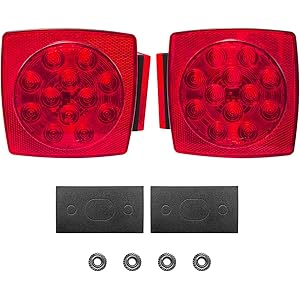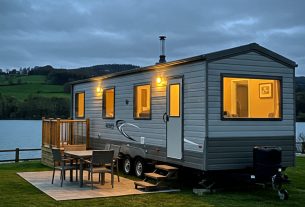As I delve into the world of trailer homes, or mobile homes as they are often called, I find myself fascinated not just by the homes themselves, but by the communities they create and the lifestyles they offer. In the United States, the prevalence of trailer homes varies significantly from state to state. This article will explore which states have the most trailer homes, backed by statistics, trends, and personal observations. Join me as I navigate through this unique housing landscape!
The Rise of Trailer Homes in America
Before diving into the statistics, let’s take a moment to understand how trailer homes became a staple of American life. In the post-World War II era, the need for affordable housing surged. Mobile homes emerged as a solution, providing a cost-effective way for families to own their homes. Over the decades, trailer homes have evolved, becoming more spacious and better designed, but they still retain their affordability and mobility.
Understanding the Terminology
It’s essential to understand the terminology when discussing trailer homes. The terms “trailer home,” “mobile home,” and “manufactured home” are often used interchangeably, but they have distinct definitions:
- Trailer Home: Generally refers to homes built before 1976, when federal standards were established.
- Mobile Home: Refers to homes built on a permanent chassis before 1976.
- Manufactured Home: Refers to homes built after 1976 that comply with federal building standards.
For the sake of this article, I will be using “trailer home” to refer to all types of these homes for simplicity.
Top States with the Most Trailer Homes
According to the latest data from the U.S. Census Bureau and housing surveys, certain states stand out for their high concentrations of trailer homes. Here’s a breakdown of the top states where trailer homes are most prevalent:
1. Florida
Florida leads the nation in trailer homes, with a significant portion of its population living in mobile homes. The state’s warm climate, affordability, and vibrant retirement communities attract many residents to this lifestyle.
- Statistics: As of the latest census, over 1 million households in Florida reside in manufactured homes.
- Communities: The state has numerous mobile home parks, many of which cater to retirees.
- Affordability: The average cost of mobile homes in Florida is significantly lower compared to traditional homes, making it an attractive option.
2. Texas
Texas is another state known for its high number of trailer homes. The vast land and affordable real estate options make it an ideal location for mobile home living.
- Statistics: Texas has approximately 900,000 mobile homes, making it the second-largest state for trailer housing.
- Community Diversity: From urban areas near Dallas and Houston to rural settings, Texas offers a variety of living environments.
- Economic Factors: The low cost of living and no state income tax are significant draws for mobile home residents.
3. California
While California is known for its high cost of living, it also has a significant number of trailer homes, especially in rural and suburban areas.
- Statistics: There are over 600,000 manufactured homes in California.
- Unique Communities: Areas such as the Coachella Valley have vibrant mobile home communities.
- Regulatory Environment: California’s regulations on land use and zoning often support mobile home developments.
4. New York
New York, known for its bustling cities, also has a notable trailer home population, particularly in upstate regions.
- Statistics: Approximately 300,000 mobile homes are found in New York State.
- Community Appeal: Many mobile home parks are located near lakes and recreational areas, attracting nature lovers.
- Affordability: Mobile homes offer a more affordable housing option compared to traditional homes in the state.
5. North Carolina
North Carolina rounds out the top five states for trailer homes, with a growing number of residents opting for this housing style.
- Statistics: The state boasts over 300,000 manufactured homes.
- Rural Appeal: Many mobile homes are found in rural communities, offering a peaceful lifestyle.
- Cost Factor: The affordability of land and homes makes North Carolina an attractive option for mobile home living.
Factors Driving the Popularity of Trailer Homes
What makes trailer homes so appealing? Based on my research and personal observations, there are several factors driving their popularity:
1. Affordability
One of the most significant advantages of trailer homes is their affordability. With rising housing costs nationwide, many families turn to mobile homes as a more budget-friendly option. The average cost of a new manufactured home is often less than half that of a traditional home.
2. Mobility
The ability to move a home offers freedom that traditional homeowners don’t have. This is especially appealing for those who may need to relocate for work or family reasons.
3. Community Living
Many trailer parks foster a sense of community, providing residents with social opportunities and support. I’ve seen firsthand how these communities can create tight-knit environments where neighbors become friends.
4. Sustainable Living
With the growing emphasis on sustainability, many mobile homes are designed to be energy-efficient. This appeals to eco-conscious individuals looking to reduce their carbon footprint.
Challenges Facing Trailer Home Residents
1. Stigma
Despite their advantages, trailer homes often carry a stigma. Many people associate them with poverty or transient living, which can lead to discrimination against residents. Overcoming this stigma is essential for changing perceptions and celebrating the benefits of mobile living.
2. Zoning Regulations
In some areas, zoning laws can create barriers to placing mobile homes. Homeowners may face challenges in finding suitable land or may be restricted by local regulations.
3. Limited Financing Options
Securing financing for a mobile home can be more challenging than for a traditional home. Many lenders treat mobile homes as personal property rather than real estate, which can lead to higher interest rates or stricter lending criteria.
Case Studies: Success Stories in Trailer Living
Despite the challenges, there are numerous success stories that highlight the benefits of trailer living. Here are a few noteworthy examples:
The Tiny House Movement
Many individuals and families are embracing the tiny house movement, which often includes mobile homes. These homeowners prioritize minimalist living and financial freedom, showcasing how trailer homes can align with sustainable lifestyles.
Retirement Communities
States like Florida and Texas have thriving retirement communities composed primarily of mobile homes. These communities provide a safe, affordable space for retirees, fostering social connections and active living.
Urban Mobile Home Parks
In cities like Los Angeles and Austin, innovative mobile home parks are emerging. These parks offer affordable housing options in urban areas where traditional housing is prohibitively expensive, helping to address housing shortages.
Future Trends in Trailer Homes
Looking ahead, several trends may shape the future of trailer homes:
1. Eco-Friendly Designs
As sustainability becomes a significant concern, the demand for eco-friendly mobile homes is likely to grow. Manufacturers are increasingly focusing on energy-efficient designs and sustainable materials.
2. Smart Home Technology
Integration of smart home technology into mobile homes is on the rise. Features like smart thermostats and security systems enhance convenience and safety for residents.
3. Increased Acceptance
As more people embrace alternative living styles, the stigma surrounding trailer homes may diminish. This acceptance could lead to greater investment and development in mobile home communities.
Conclusion: Embracing the Trailer Home Lifestyle
In conclusion, trailer homes represent a unique and increasingly popular housing option in the United States. Florida, Texas, California, New York, and North Carolina are leading the way in trailer home populations, each offering a distinct appeal. As I’ve explored, the affordability, mobility, and sense of community associated with trailer living make it an attractive choice for many. However, challenges such as stigma and financing hurdles remain. By embracing the benefits and addressing these challenges, I believe trailer homes can play a pivotal role in the future of American housing.
FAQs
What is the average cost of a trailer home?
The average cost of a new manufactured home can range from $50,000 to $100,000, depending on size and location.
Are trailer homes a good investment?
Trailer homes can be a good investment, especially in areas with high demand for affordable housing. However, potential buyers should research local market trends.
Can trailer homes appreciate in value?
While mobile homes typically depreciate like vehicles, certain models and locations can appreciate over time, especially if they are well-maintained and located in desirable areas.
How can I find a mobile home community?
Websites like Zillow, local real estate agencies, and community directories can help you find mobile home parks and communities in your area.
If you found this article insightful, I encourage you to share it with friends and family on social media. For more valuable content like this, sign up for our newsletter!
fouwick LED Trailer Light, License plate light, 12V Easy Install Waterproof for Under 80 Inch Boat utility Trailer Trucks Campers RVs Snowmobiles DOT Compliant (Light only)
$14.90 (as of November 15, 2025 07:52 GMT -03:00 - More infoProduct prices and availability are accurate as of the date/time indicated and are subject to change. Any price and availability information displayed on [relevant Amazon Site(s), as applicable] at the time of purchase will apply to the purchase of this product.)
Sign up for our newsletter and stay up to date with exclusive news
that can transform your routine!





